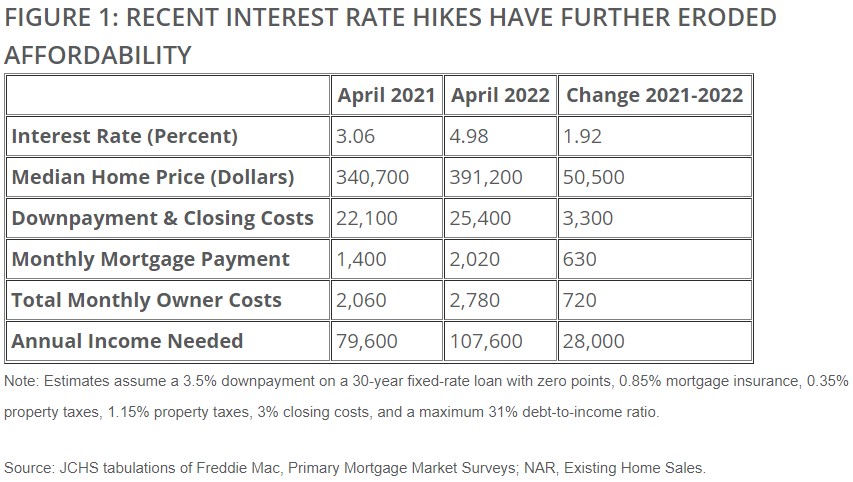 It’s no secret that the combination of rising home prices along with a trend of increasing interest rates have made buying the typical single-family home much more expensive, if not completely unaffordable for many.
It’s no secret that the combination of rising home prices along with a trend of increasing interest rates have made buying the typical single-family home much more expensive, if not completely unaffordable for many.
According to Joint Center for Housing Studies [1] at Harvard University author Daniel McCue, the median sales price of an existing home exceeded 15% gain from April 2021 to April 2022, going from $340,700 to $391,200. During this same period of time, mortgage rates themselves went from 3.05% to 4.98% (which has since eclipsed the 5.5% mark) changing mortgage costs significantly.
McCue said that the average buyer purchasing an average house with a 30-year fixed-rate mortgage now faces a monthly payment of $2,020 versus $1,400 a year prior.

“In markets where the typical home is much more expensive than the U.S. median, a household needs a much higher income,” McCue said in a Housing Perspectives blog post. “For example, in the San Francisco metro, the median home price is $1.5 million, which means a household would need an annual income of over $400,000 to afford the steep $10,700 in monthly owner payments.
“In fast-growing Austin, a household would need an annual income of $165,000 to qualify for a loan on the $600,000 median priced home. This is nearly twice as high as the $84,000 needed to buy the median-priced home in nearby Houston.”
“In all, total monthly payments were up by at least $500 over the past year in 70 of the 100 largest metro areas, including 30 metros where owner costs jumped by more than $1,000 per month,” said McCue.

The report concluded saying that the additional barriers to homeownership are hurting consumers because they are not building wealth through home equity. This affects a wide swath of the population, but affects households of color the most.
At last measure, the homeownership rates for Hispanic households (48.3%) and non-Hispanic Black households (46.0%) were 26 and 29 percentage points lower than for non-Hispanic white households (74.6%). Higher barriers to homeownership make it more difficult and costly for policy to help reduce these longstanding inequalities.
Click here [2] to read the blog post in its entirety.